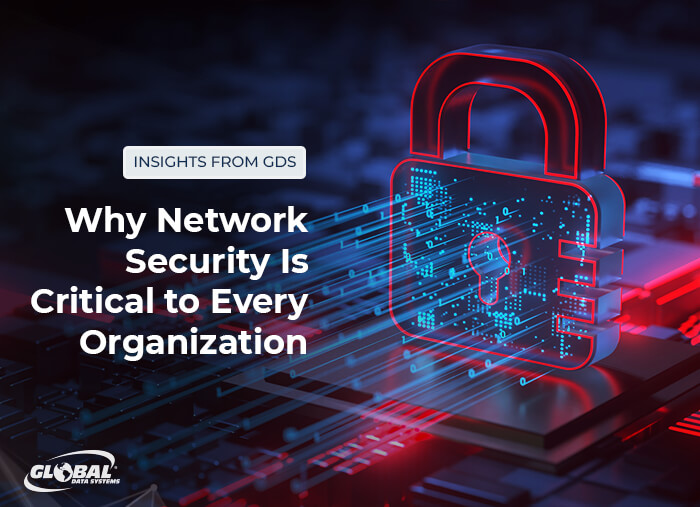Why Information and Network Protection Need To Be a Leading Priority for each Organization

Raising Cyber Threat Landscape
As organizations significantly rely upon electronic facilities, the cyber hazard landscape has actually expanded significantly much more complicated and perilous. A wide range of advanced assault vectors, consisting of ransomware, phishing, and progressed relentless hazards (APTs), posture substantial dangers to delicate information and functional connection. Cybercriminals take advantage of progressing strategies and technologies, making it crucial for organizations to stay aggressive and cautious in their protection actions.
The spreading of Internet of Things (IoT) gadgets has additionally exacerbated these difficulties, as each connected tool stands for a prospective entry point for destructive actors. Furthermore, the rise of remote work has actually expanded the strike surface area, as employees access company networks from numerous places, often making use of personal gadgets that might not abide by rigorous security procedures.
In addition, regulative conformity requirements proceed to advance, requiring that organizations not just safeguard their data however additionally demonstrate their commitment to safeguarding it. The raising combination of man-made intelligence and artificial intelligence into cyber protection strategies offers both difficulties and possibilities, as these innovations can boost hazard detection however might also be made use of by adversaries. In this setting, a robust and flexible safety posture is crucial for reducing dangers and ensuring organizational durability.
Financial Ramifications of Data Breaches
Data violations lug considerable economic implications for organizations, commonly causing costs that extend much past prompt remediation efforts. The first costs normally consist of forensic examinations, system repairs, and the implementation of boosted security steps. The economic fallout can further escalate through a range of added elements.
One significant worry is the loss of earnings originating from lessened client trust. Organizations may experience reduced sales as customers look for even more secure choices. In addition, the lasting influence on brand name online reputation can cause lowered market share, which is hard to measure however exceptionally impacts earnings.
Furthermore, organizations might encounter increased expenses pertaining to customer alerts, credit rating monitoring solutions, and possible payment claims. The economic problem can likewise encompass prospective increases in cybersecurity insurance policy costs, as insurance providers reassess danger adhering to a violation.
Regulatory Conformity and Legal Dangers
Organizations deal with a myriad of regulatory conformity and legal threats following a data violation, which can substantially make complex recovery initiatives. Different regulations and policies-- such as the General Information Protection Guideline (GDPR) in Europe and the Health Insurance Policy Portability and Responsibility Act (HIPAA) in the USA-- mandate strict guidelines for information protection and violation alert. Non-compliance can result in significant penalties, lawsuits, and reputational damage.
In addition, organizations should navigate the facility landscape of state and federal regulations, which can differ significantly. The capacity for class-action lawsuits from influenced stakeholders or customers even more worsens lawful difficulties. Firms often face scrutiny from regulatory bodies, which may impose additional penalties for failures in data governance navigate to these guys and safety and security.
In enhancement to monetary consequences, the legal implications of an information breach may necessitate significant investments in legal counsel and compliance resources to handle investigations and remediation efforts. Therefore, comprehending and sticking to appropriate guidelines is not just a matter of lawful obligation; it is important for safeguarding the organization's future and keeping functional integrity in an increasingly data-driven environment.
Structure Consumer Trust Fund and Loyalty
Often, the structure of client trust and loyalty depend upon a company's commitment to information security and privacy. In an era where information violations and cyber risks are progressively common, consumers are extra critical about exactly how their personal details is managed. Organizations that focus on robust data defense gauges not just secure sensitive info but likewise foster an atmosphere of trust fund and transparency.
When consumers perceive that a firm takes their information safety and security seriously, they are more probable to take part in long-term partnerships with that brand name. This trust is strengthened via clear communication concerning information practices, consisting of the sorts of info gathered, just how it is utilized, and the measures taken to secure it (fft perimeter intrusion solutions). Firms that adopt a positive strategy to safety can separate themselves in an affordable marketplace, causing raised customer commitment
Furthermore, organizations that demonstrate responsibility and responsiveness in case of a safety and security occurrence can turn potential crises into chances for enhancing customer connections. By constantly focusing on information protection, businesses not only protect their possessions however likewise grow a devoted customer base that feels valued and protect in their communications. This way, information safety comes to be an integral component of brand name honesty and consumer satisfaction.

Necessary Approaches for Protection
In today's landscape of advancing cyber threats, carrying out essential techniques for defense is crucial for guarding delicate information. Organizations should embrace a multi-layered safety and security approach that consists of both human and technological aspects.
First, releasing innovative firewalls and invasion discovery systems can aid monitor and block harmful activities. Routine software program updates and spot management are important in dealing with susceptabilities that might be manipulated by attackers.
2nd, worker training is imperative. Organizations should conduct regular cybersecurity recognition programs, educating staff concerning phishing read more rip-offs, social design methods, and secure browsing practices. A well-informed workforce is an effective line of protection.
Third, information file encryption is necessary for Our site shielding delicate info both in transportation and at rest. fft perimeter intrusion solutions. This guarantees that even if data is obstructed, it continues to be hard to reach to unauthorized users
Conclusion
In verdict, prioritizing information and network safety is necessary for organizations browsing the significantly intricate cyber hazard landscape. The economic consequences of information violations, combined with rigid governing compliance needs, emphasize the necessity for robust security procedures.
In an age marked by an increasing regularity and class of cyber hazards, the essential for organizations to focus on data and network protection has never been extra important.Often, the structure of client trust and commitment hinges on a firm's dedication to data security and personal privacy.When clients view that a company takes their information security seriously, they are much more likely to involve in long-term connections with that brand. By constantly prioritizing information safety and security, companies not just secure their properties but likewise grow a devoted consumer base that really feels valued and protect in their interactions.In final thought, prioritizing information and network security is necessary for companies navigating the increasingly complicated cyber danger landscape.